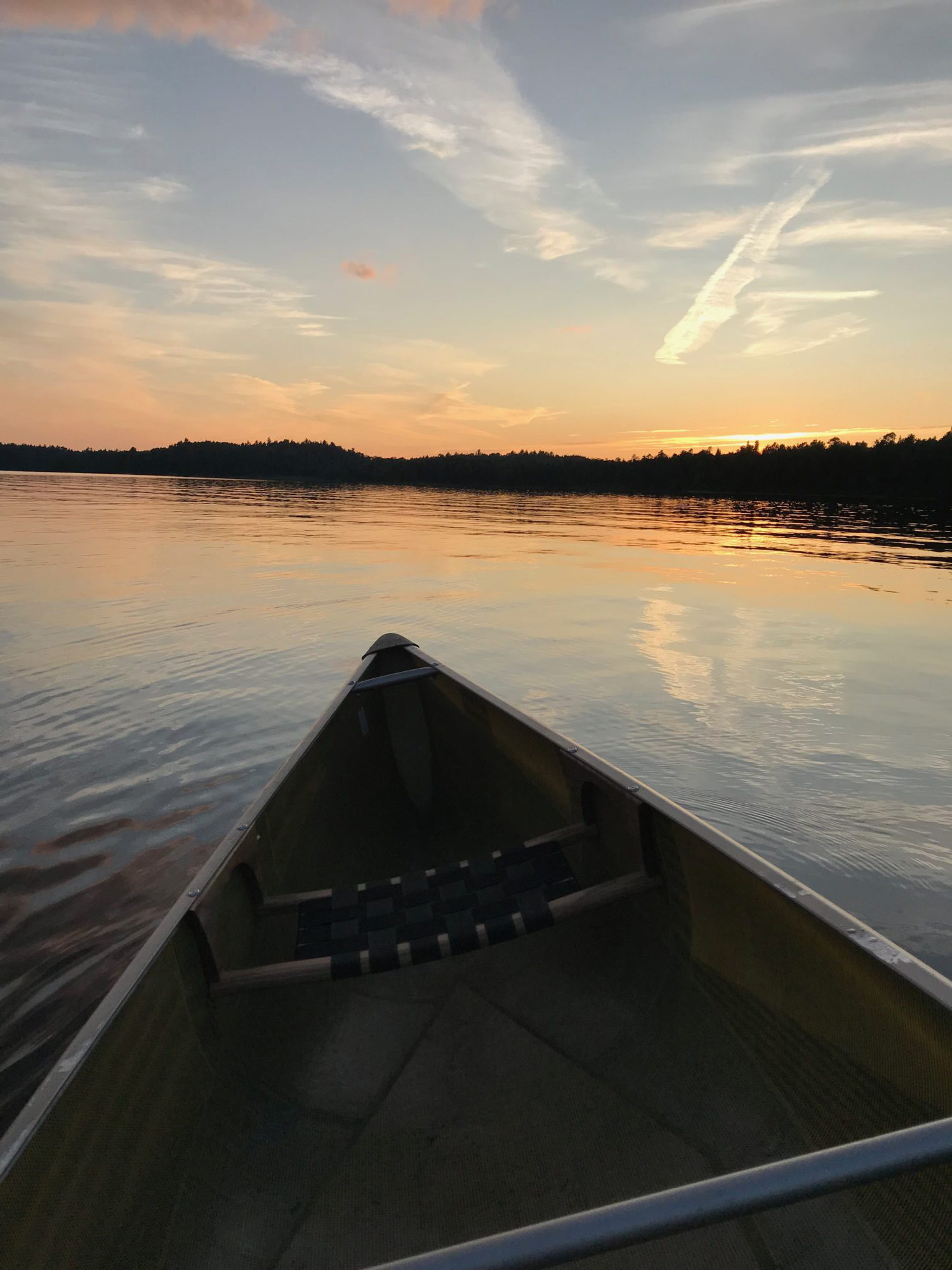In July, while I was on my Surrender Experiment, there were too many layers of uncertainty for me to handle with grace. Kurt was out of work and the kids were out of contact (at wilderness camp). Also, I was promoting the book with uncertain results, and I was waiting to hear if I’d made it into a clinical trial. Meanwhile, refugee children were being detained at the border in unspeakable conditions.
I felt way out of balance, heavy on despair, and light on trust in a bright future. How can I steer us in a better, safer direction? I desperately “needed” to edit Kurt’s resumé, track the weather on the river where Cole was paddling, work harder each day to sell books, and make this disease and the suffering at the border go away. But none of those desires and behaviors were getting me closer to finding joy.
To raise the vibration from low to high, I stayed committed to the rules of my surrender experiment and went canoeing.
Surrender Experiment rules:
- No news or social media for 30 days
- If life presents me with an opportunity, I must say yes
- I can use my will to take action, but I can’t plan or push my agenda forward
“It’s not about dropping out of life; it’s about leaping into life to live in a place where we are no longer controlled by our personal fears and desires.” –Michael Singer
So Kurt and I flew to Toronto, then drove six hours to Temagami, a wilderness area in northern Ontario that I paddled almost every summer as a child. It’s not unusual to go for days on its vast lakes without seeing another person. The idea was to do a four-day canoe trip just as grown-ups, surrendering to nature’s whims, before we picked up both kids from camp. It would be peaceful! Fun! Romantic! And it was, sort of, but definitely not at first.
A particular kind of fun
At first, it was uncomfortable and hard. Without any income coming into our home, it felt irresponsible to leave my desk and not promote the book. Plus, it had been thirty years since I’d been on a canoe trip. I only remembered the clear water, bright stars, and joyful campfire conversations. I had forgotten that it’s a lot of work to load and unload a canoe, to paddle long hours into a strong headwind, and to carry everything from lake to lake over muddy ground and sharp rocks. (And the bulk of that work fell on Kurt’s shoulders as I can’t carry heavy weight anymore!)
Between the two of us, we had 1.5 pairs of shoes and a single pair of sunglasses. In the packing rush, Kurt forgot shoes other than flip flops which soon broke, and I left my sunnies in the car. I steered the canoe with my eyes closed because the sun reflecting off the water felt like a laser shooting into my corneas. Not to mention that the mosquitoes were so thick, we had to speak to one another in telegram-like sentences. If our lips were open for longer than a second, dozens of mozzies would rush in our mouths.
After a long day, Kurt looked at me through a cloud of mosquitoes and said,
“It’s a particular kind of fun, isn’t it?”
Here’s why it’s worth it:
Canoeing slows you down to the pace of deep, glacial lakes and the stroke of a wooden paddle.
It took me two days to shed my city pace and find nature’s pace. Two days to move from wanting and restlessness to gratitude and awe. On day three, I remember standing in the forest thinking, I don’t need anything. We have everything we need in this light pack. (Ok. Maybe we could use one right flip flop, men’s size 11, and one pair of sunglasses.)
To spend time in a canoe is to learn to balance and to center yourself.
If you lean too far to one side, you’ll capsize. If you move too quickly or with too much force, you’ll capsize. And if you focus on the future, you’ll get off course. One day I discovered this last point while experimenting with trying to go as straight as possible in the canoe for one hundred meters. My typical method is to pick a spot far on the horizon and aim for it, using a j-stroke paddle technique. Concentrating on the horizon works, but every once in a while, the canoe suddenly and inexplicably dives left or dives right, and it requires a flurry of paddle strokes to get back on track. But because I didn’t have my sunglasses, I focused on the spot where my paddle entered the water instead of way out ahead. I put my attention on the wooden paddle blade right in front of me, and all my concentration on making the smoothest, steadiest stroke I could. The canoe slid straight across the lake for one, two, then three hundred meters (at least) without diving off course once. Being in a canoe teaches me rhythm and grace.
Nature reminds us that we are not in charge.
In Nature, the surrender experiment felt easy. At home, it’s more difficult for me to let go. I imagine that I am the one in control of outcomes. But once we were outside all day and night, it was clear that I was not in charge. I didn’t have to make sure that the sun rose on time, that the stars would come out, that the white pines would stretch to the sky, or that the lakes filled with cool, calm waters. One evening, just when I could no longer take the mosquitoes buzzing around my head, a group of dragonflies glided past, silencing the air. Everything just seemed to work without me doing a thing.
When we paddled to shore on our last day, I cried. I wanted to stay out longer. I wasn’t ready to reach land, be found by the bugs, and re-enter the pace of cars. But I was ready to see the kids!! We didn’t extend our canoe trip, but maybe I’ll extend the surrender experiment for another 30 days…
Love,
Susie
P.S. Kurt got a job that he loves! And when I finally opened my email, there were three requests from major media sources wanting to know more about Fierce Joy. The next day, I was sitting in a TV studio in Toronto doing an interview for CTV’s Your Morning, and on CBC radio: Here & Now.

